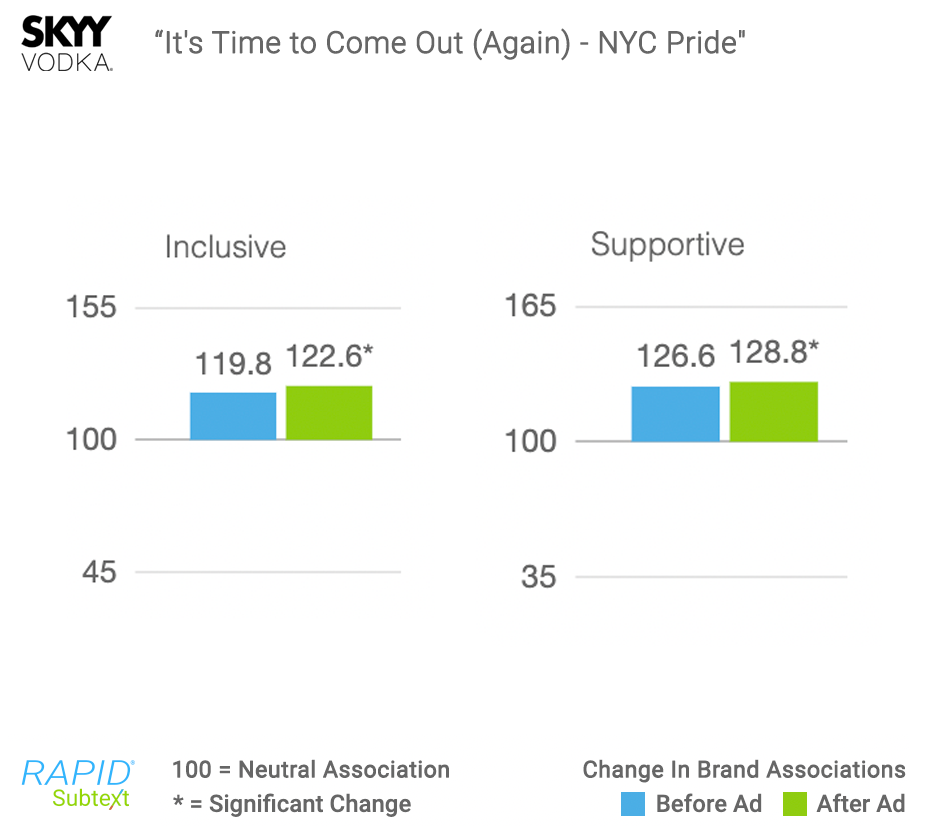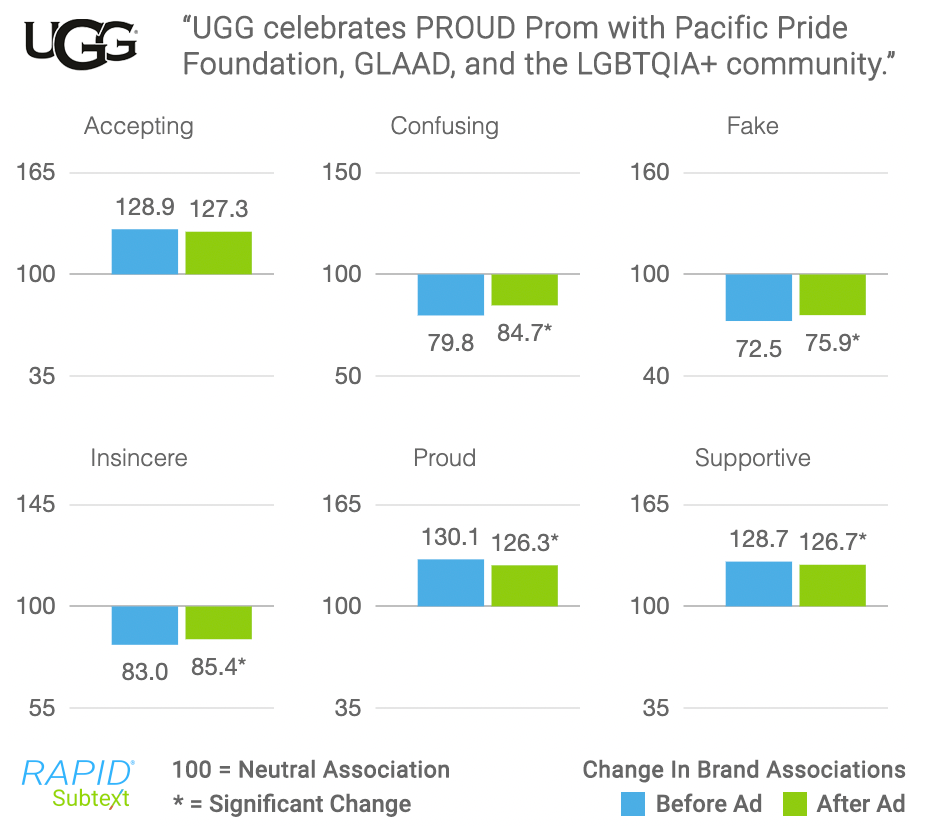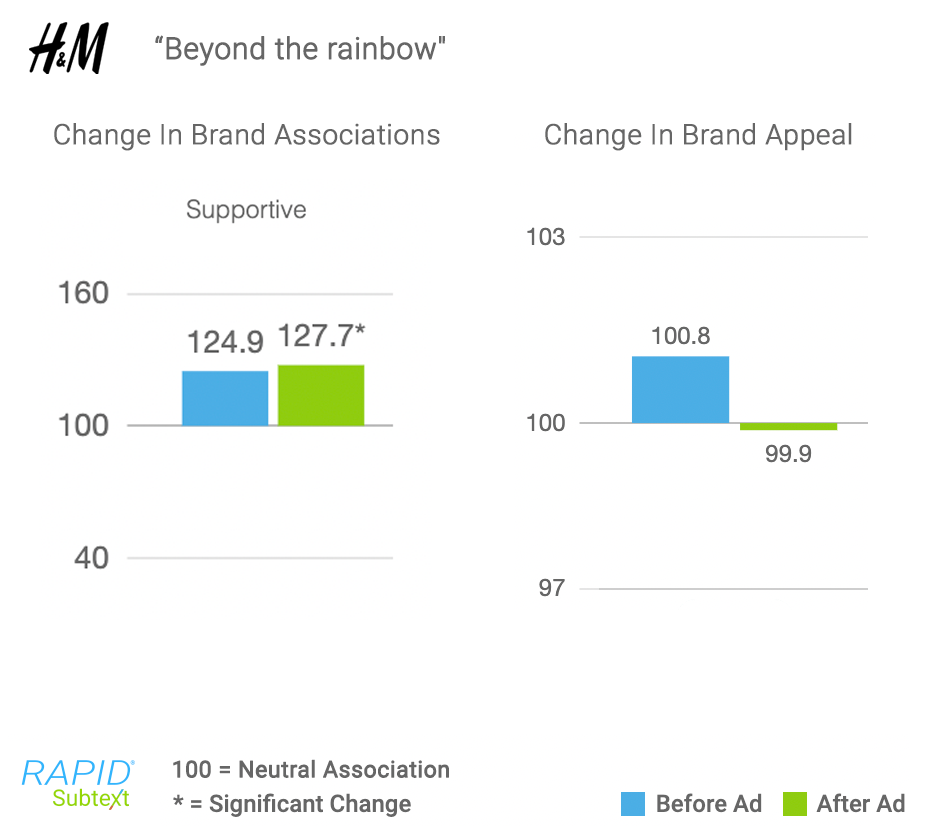Understanding Advertising’s Impact on Supporting Pride Month
As we look back at advertising during Pride Month, we wanted to understand how brands’ support of Pride Month impacts the changes in how we feel towards the LGBTQ+ community. We took a look at many ads that tried different approaches to convey their support for Pride Month. A few that stood out were H&M, UGG, and SKYY. Some of these ads were successful and some were not so successful in increasing brand appeal while improving how we feel about the LGBTQ+ community.
We wanted to know how effective these ads were at improving associations of inclusivity, support, and love with their respective brands. Or did these ads actually generate bias towards the LGBTQ+ community?
The first ad by H&M depicts the difference between waving the pride flag and telling the stories behind what the flag actually represents. Here is a video that shows the emotional journey, using facial action coding within RAPID Subtext of those that had more and less implicit brand appeal after watching the ad.
The UGG pride ad features the work of popular artist Lil Nas X, as he and other members of the LGBTQ+ community explain the importance of loving yourself and fully expressing one’s pronouns. The following is a video that shows the emotional journey, using facial action coding of those that had more and less implicit brand appeal after watching the ad.
The SKYY Vodka advertisement creates a crossover between “coming out” as a member of the LGBTQ+ community and also the “coming out” of quarantine to help promote local LGBTQ+ safe spaces as we slowly return to normal. Check out the video here using RAPID Subtext facial action coding, of those that had more and less implicit brand appeal after watching the ad. Often times ads that improve brand appeal take consumers through more of an emotional journey of highs and lows.
Using RAPID Subtext ad-testing technology, you can track emotionally-charged data to see how consumers felt before and after seeing these ads, giving you access to understanding how the subconscious changed from exposure to advertising.
So let’s take a deeper dive into some of these results. RAPID Subtext allows you to automate your survey to reach diverse people across the world with a high degree of accuracy. In this case, we surveyed over 200 people in the U.S. from the general population. The SKYY ad was successful in creating a significant change in brand associations with the attributes “inclusive” and “supportive”, while also seeing a +2.3 positive change in implicit brand appeal.


When taking a look at UGG’s ad, it didn’t have quite as strong of an effect. This 30-second ad left viewers thinking UGG was “more fake”, “more confusing”, “more insincere”, “less proud”, and “less supportive” after watching the ad. What went wrong?
While UGG did a great job of using positive language that struck a chord with people emotionally, they failed to make a meaningful connection to their product, which may have driven the associations of “fake” and “confusing” towards their brand.
Finally, H&M’s 45-second ad opened the floor to members of the LGBTQ+ community to speak about what the pride flag means to them and how “it isn’t just something to wave around.” Although H&M saw a significant uptick in brand association with “supportive”, they saw a slight negative change in their implicit brand appeal.

As more brands begin to support the LGBTQ+ community and beyond, it is imperative for marketers, creatives, and agencies alike to create an ad that is empathetic, yet genuine. Brands have the ability to shift cultural norms through their advertising spend, but it’s clear through RAPID Subtext that it must be done in a way that creates an authentic connection with the product/service. Now with the capabilities of RAPID Subtext, brands have the responsibility to understand the influence of their advertising.
